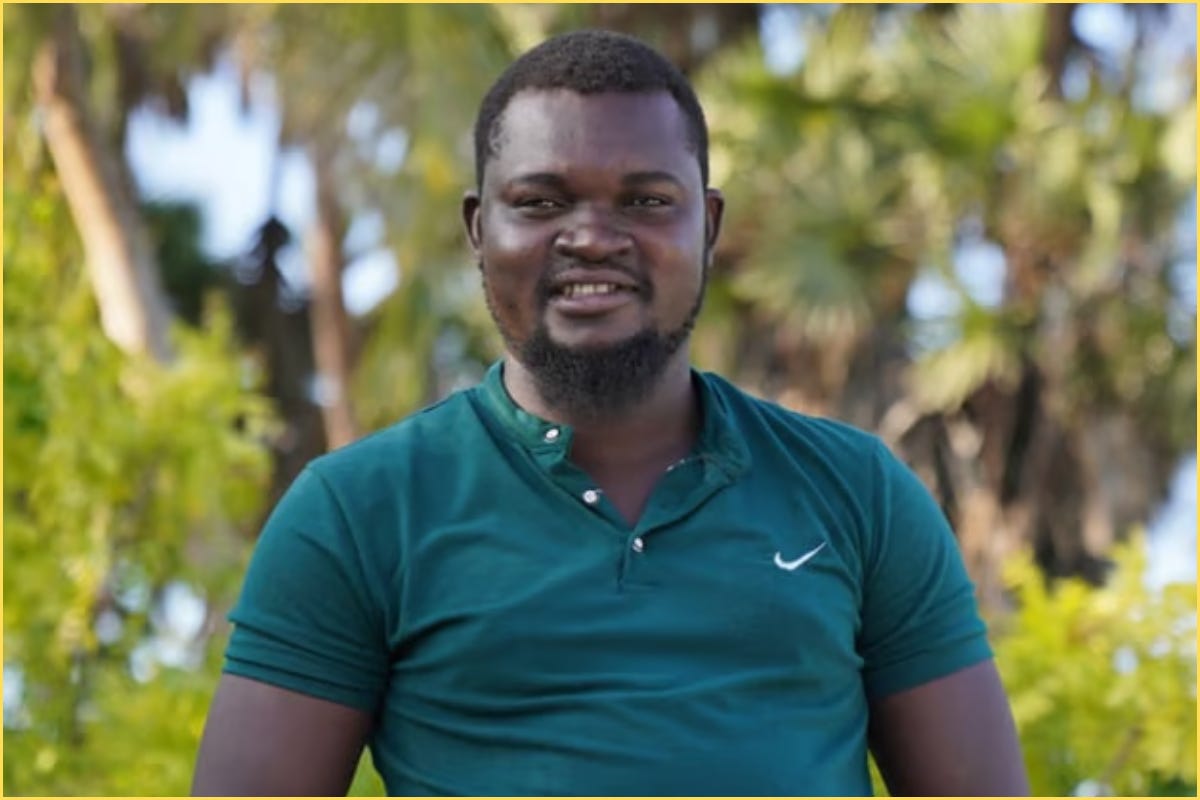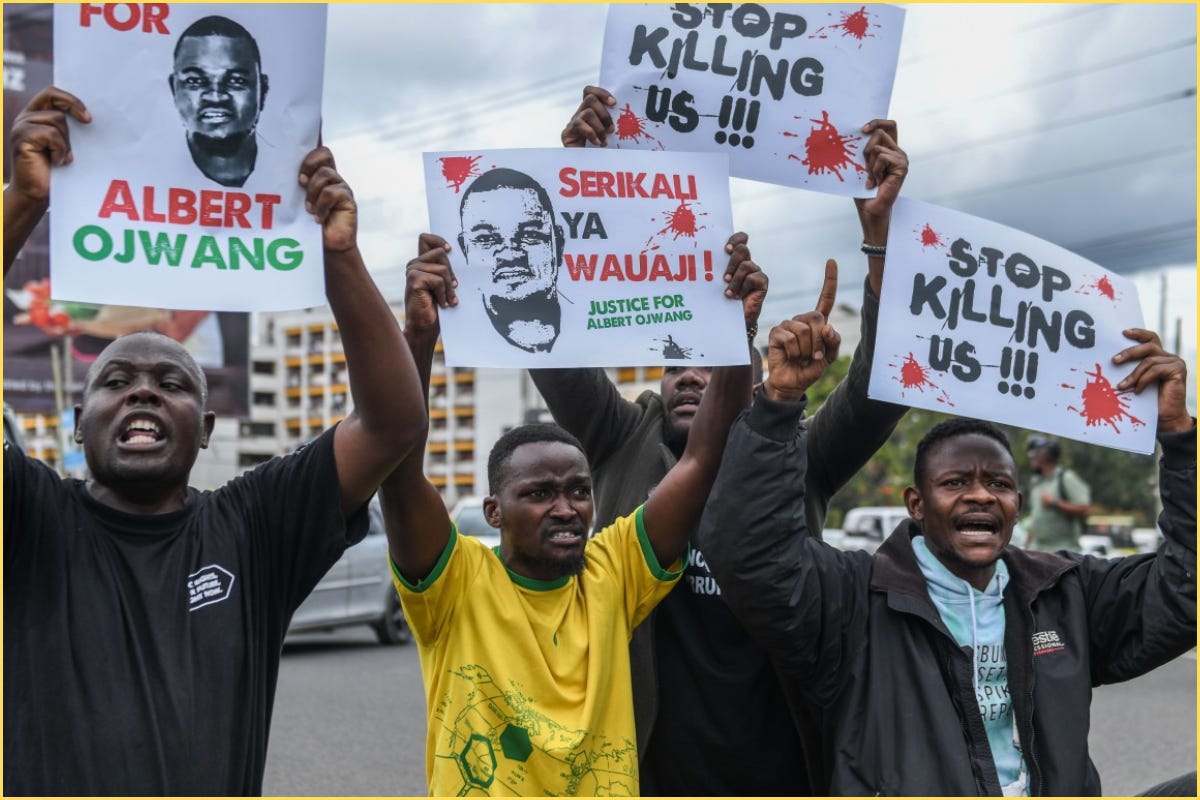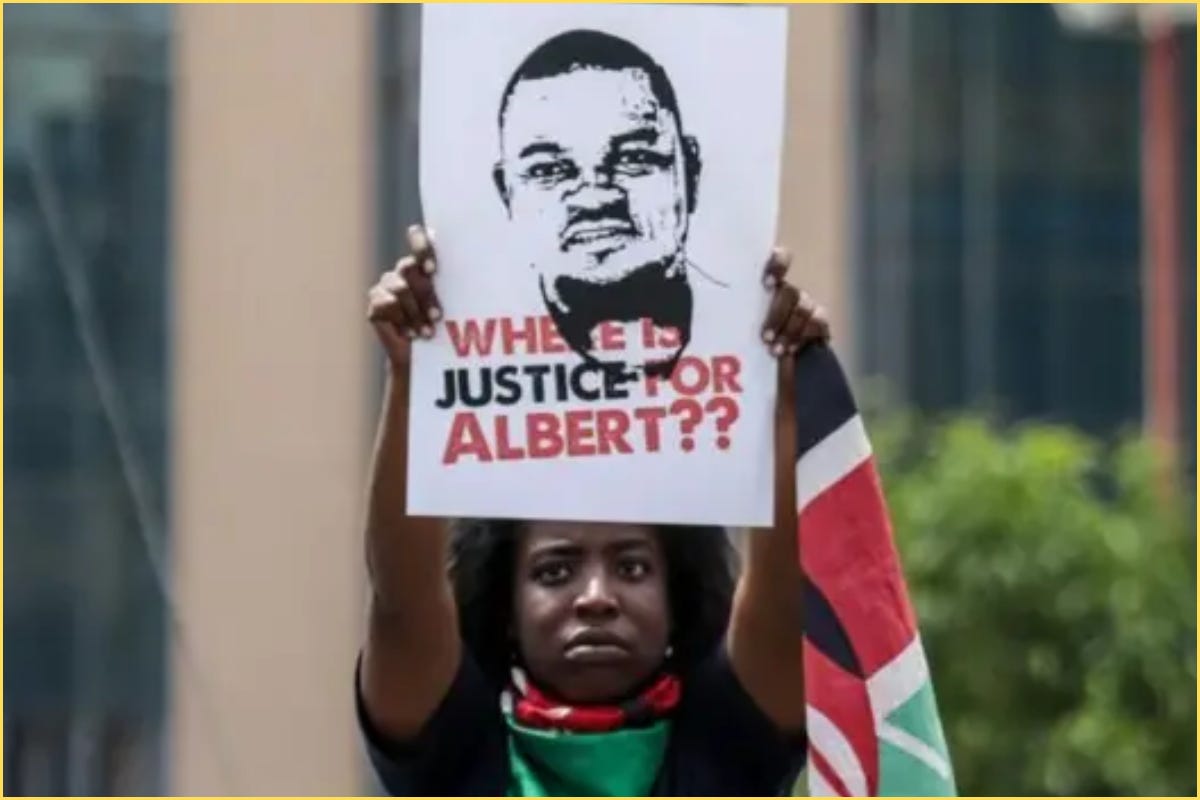the death that brought kenya’s youth back on to the streets
the killing of a blogger renews scrutiny on kenya’s security apparatus and youth disillusionment.
Albert Omondi Ojwang, a 31-year-old teacher and satirist, was arrested on June 6 in Homa Bay, western Kenya, after publishing a social media post critical of a senior police officer. He died the next day in police custody.
Authorities claimed he had taken his own life by repeatedly striking his head against the wall. A postmortem told a different story: blunt force trauma, neck injuries, and signs of systematic beating. Consistent with torture.
Government officials expressed concern , but on the ground, few were surprised. In Kenya, the price of dissent is increasingly being set by the police.
the system, not an exception
Ojwang's death is not an isolated incident. Under President William Ruto, Kenyan police have faced mounting accusations of excessive force and extrajudicial killings particularly targeting protesters, informal settlement residents, and outspoken critics of the government. These actions reflect a broader strategy of containment aimed at communities seen as politically volatile or ideologically oppositional.
In March 2023, the first wave of anti-tax protests erupted under the leadership of opposition leader Raila Odinga. But it was in June 2024 that the country saw something unprecedented. Sparked by the release of a new finance bill that would sharply increase taxes in a country where 40 percent of people live in poverty, a decentralized, youth-led movement surged across Kenya. These protests were spontaneous, leaderless, and outside traditional party politics. For the first time in a generation, young people casted off the ethnic and geographic divisions that had long shaped Kenyan politics, focusing instead on policies and structural injustice.
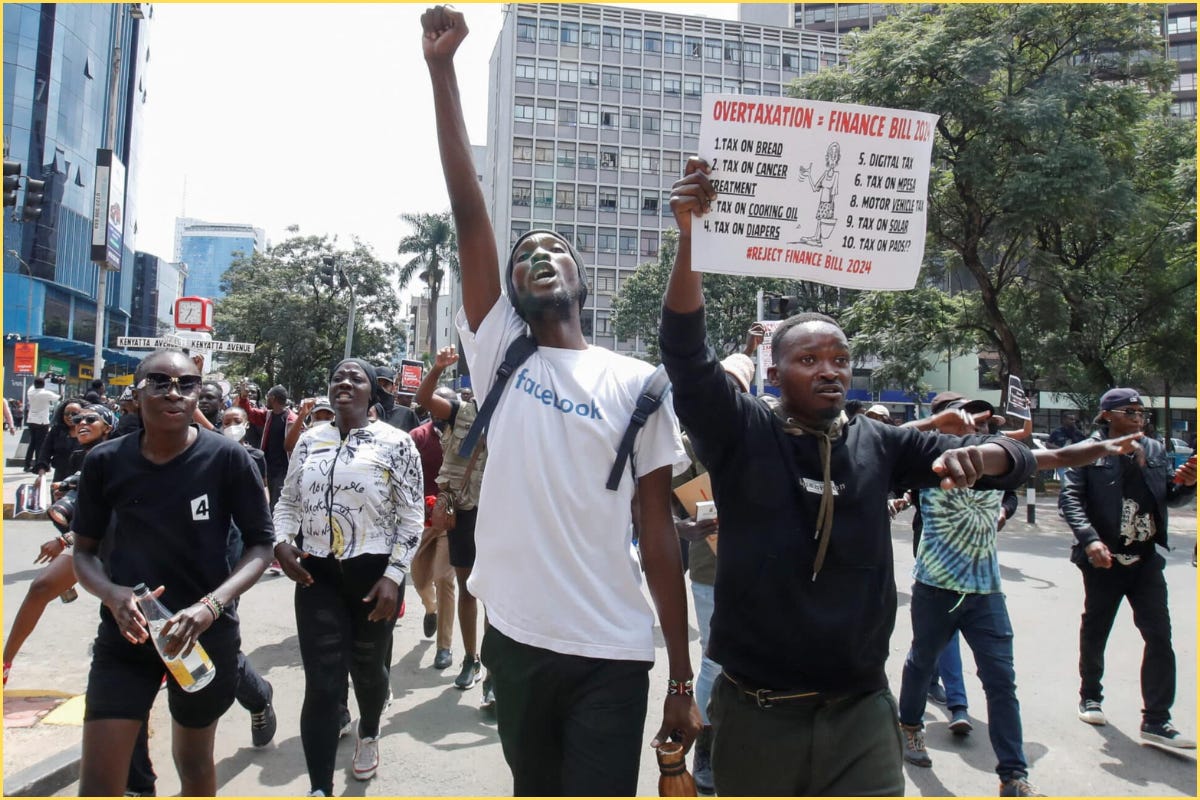
On June 25, thousands of demonstrators stormed Parliament as lawmakers debated the bill. In response to the outcry, President Ruto withdrew the legislation the next day. But the withdrawal did not stop the crackdown. Police violence and arbitrary detentions had already begun, and continued, leaving at least 50 dead and hundreds more injured or jailed. The state had stepped back somewhat on paper, but doubled down on the ground.
The June till August 2024 “Finance Bill” protests marked a political climax for the time. The government had blinked, but not relented. In the months that followed, even as demonstrations thinned, the state continued to target dissent by other means.
Almost a year later, earlier this month, Albert Ojwang was arrested in Homa Bay after publicly criticizing a senior police official. He was transported over 350 kilometers to Nairobi’s Central Police Station, bypassing local jurisdiction. No booking records. CCTV footage erased. Within 48 hours, he was dead.
digital critique, deadly consequences
Ojwang gained a following by satirizing the powerful, particularly the police. Usually through short and sharp videos shared across X and Facebook. While not a household name, his posts struck a chord with young Kenyans frustrated by state violence and elite impunity, helping crystallize the anger that has defined this generation’s politics.
After news of his death broke, protests erupted in Nairobi and other cities. Demonstrators carried signs reading “Stop killing us” and “Justice for Albert.” Police responded with tear gas, water cannons, and live rounds.
In the wake of public outrage, several officers were arrested, including the station commander and a technician responsible for the missing CCTV footage. Kenya’s Independent Policing Oversight Authority (IPOA) launched an investigation and named five officers linked to Ojwang’s detention. But IPOA’s track record offers little hope: it has secured few convictions despite receiving thousands of complaints over the past decade.
Amnesty International and other civil society organizations have demanded an independent, international inquiry. They argue that Ojwang’s killing is not an outlier, but part of a larger pattern of a state willing to silence dissent, no matter the cost.
a generation disillusioned
For young Kenyans, Ojwang’s death drove home a truth they already suspected: speaking out online can get you killed. Online, hashtags like #JusticeForOjwang and #RutoMustGo continue to trend. The demonstrations also coincide with preparations to mark the one-year anniversary of the Gen Z-led June 25 protests, a symbolic reminder that the struggle never really ended.
Some protesters are still demanding reforms like justice for Ojwang, accountability for police abuses, and resignations from senior officials. But many others have moved past reformist language. Their demands are bigger, a dismantling of the state’s violent machinery, and a confrontation with the colonial foundations of Kenya’s security system. To them, the police were never truly about public safety as it was born from colonial rule and then repurposed by successive regimes. It always functioned as a political tool, tasked with preserving power.
Young Kenyans remember last year’s protests, when they flooded the streets and forced the government to back down, at least on paper. The finance bill was withdrawn, but core grievances like soaring living costs, police violence, and elite impunity, remained untouched. What followed was the movement losing momentum in the face of state repression and limited wins.
Ojwang’s death has reignited that fire. To many, it symbolized how little had changed, and how high the stakes still are. The protests that followed is a continuation, a movement returning to the streets, angrier and more disillusioned than before.
It remains largely leaderless, by design and by necessity. It is driven by shared outrage and held together through digital organizing and decentralized coordination. This diffuse model has shielded it from easy co-optation, but it has also made the movement vulnerable to fragmentation.
While most participants have remained outside formal politics, some have taken different paths. Kasmuel McOure, who briefly became a prominent voice during the June 2024 protests, later joined the ODM party (the party of notorious loser Raila Odinga) drawing sharp backlash for aligning with the very political class the movement aimed to confront. His pivot was widely viewed as a betrayal of the protest’s ethos.
what comes next
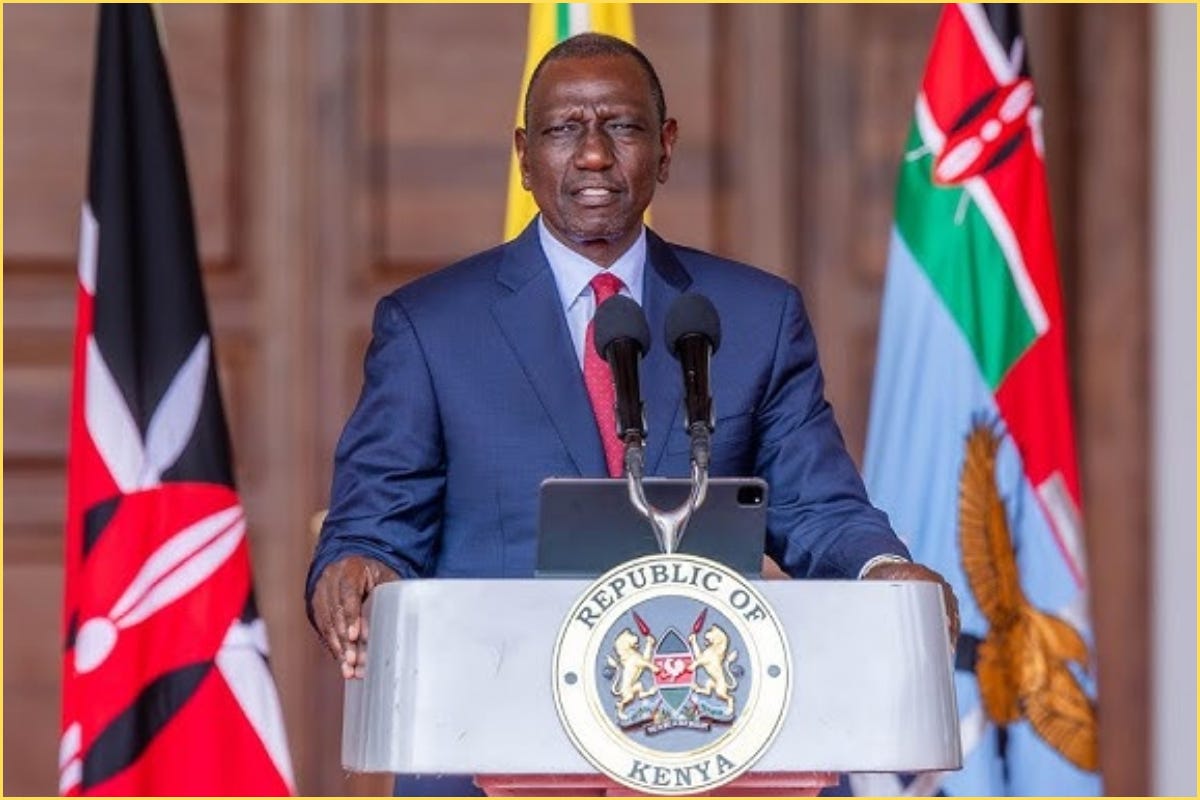
President Ruto has promised accountability. But the system that killed Albert Ojwang isn’t broken because it’s working as designed. The police were never built to protect the public and every step the state has taken since killing him, from erasing evidence to dragging their feet on arrests has signaled unrepentant impunity.
Public trust, which was already pretty shallow is eroding even more. Protesters may have retreated once, but this time, many seem unwilling to settle for partial reforms or symbolic gestures.



